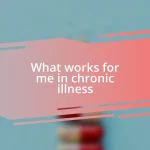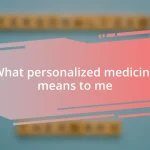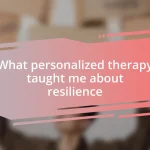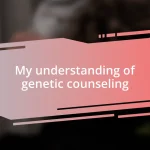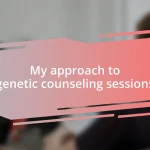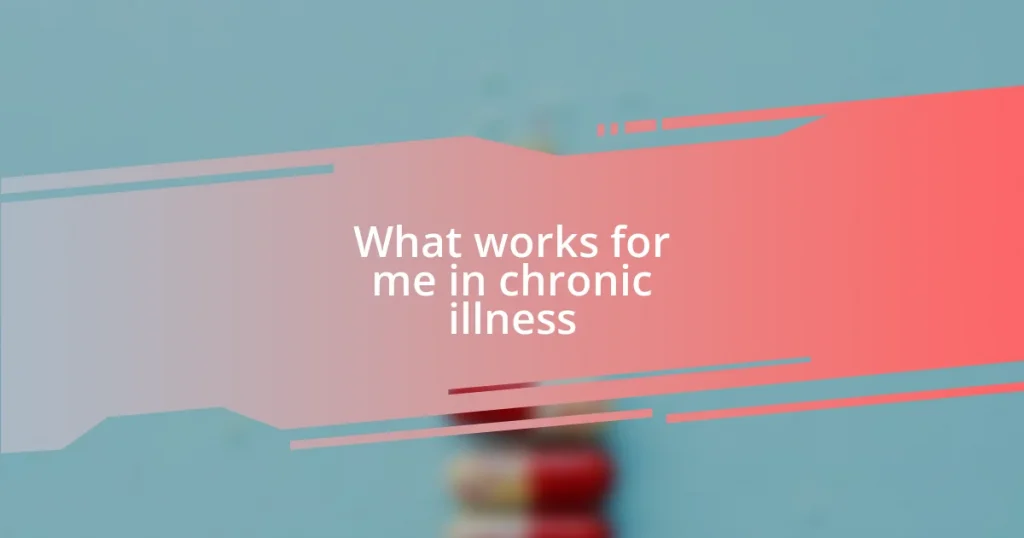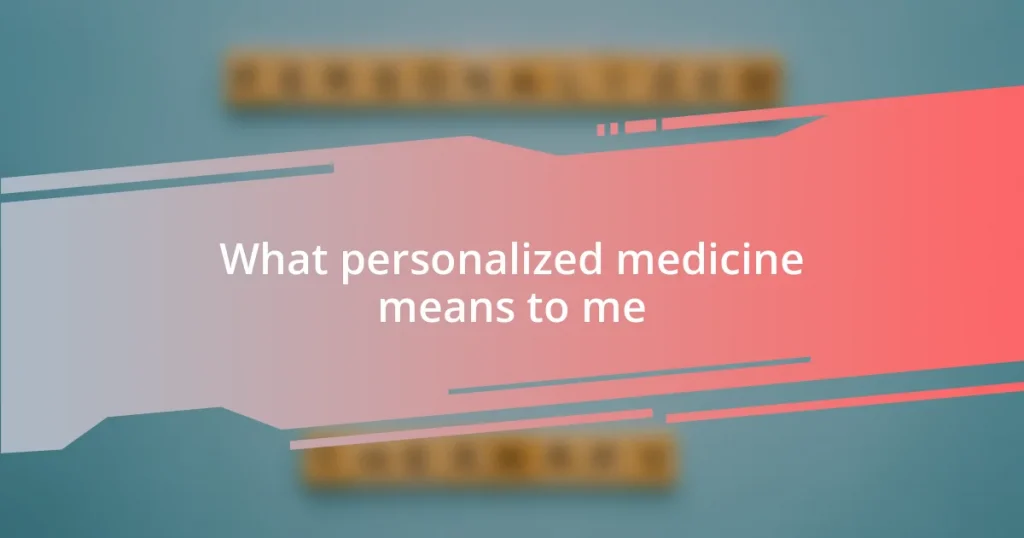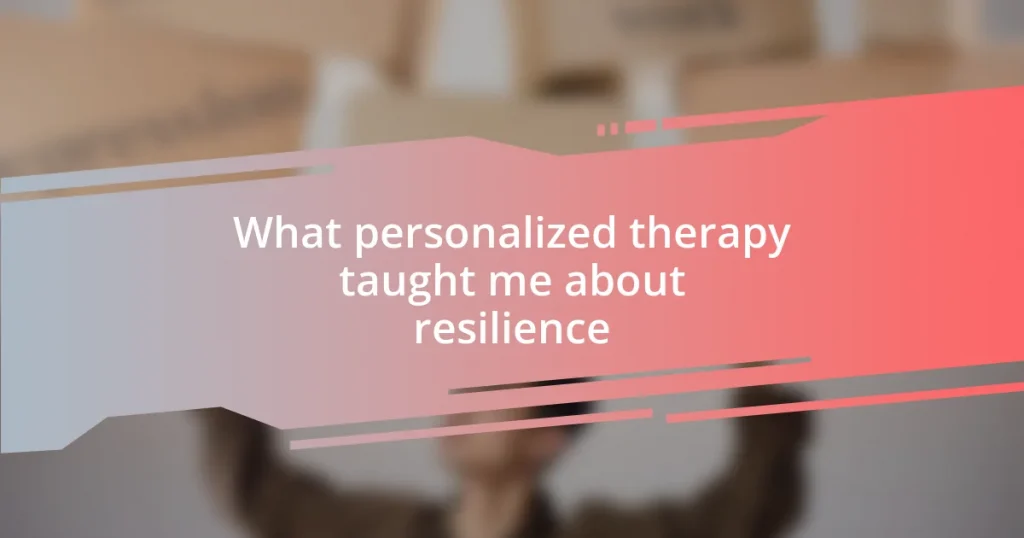Key takeaways:
- Informed consent is a fundamental ethical principle that emphasizes patient autonomy, requiring clear communication and emotional support during the consent process.
- Key elements include thorough explanation of procedures, ensuring patient understanding, and creating a supportive environment for open dialogue.
- Documenting informed consent should be a comprehensive process that reflects patient choices and facilitates ongoing communication, fostering trust and clarity.
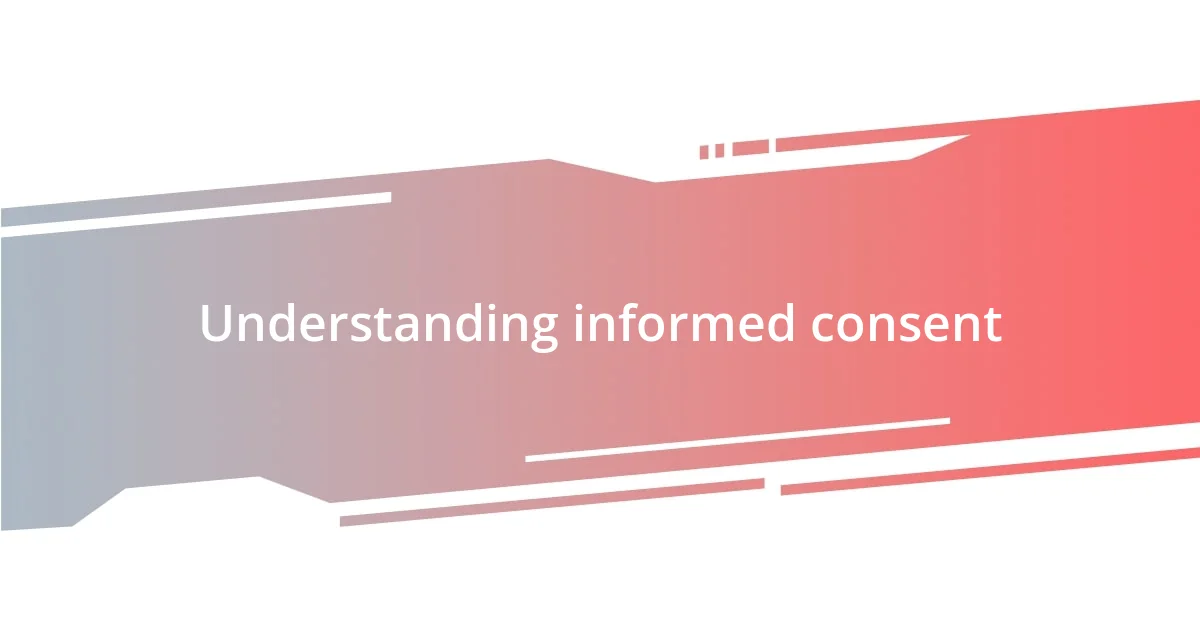
Understanding informed consent
Informed consent is not just a legal formality; it’s a fundamental ethical principle that respects individuals’ autonomy. I remember a time when a patient came in with a wealth of questions about genetic testing options. Their desire for clarity made me realize how important it is to create an open dialogue, enabling patients to understand the implications of their choices fully.
When we think about consent, it’s crucial to consider the emotional weight behind it. Each signature signifies trust—trust in the healthcare providers and the science behind genetics. Have you ever wondered how you would feel if you were in their shoes, faced with life-altering information? I often picture the anxiety a patient might feel, and this drives my commitment to ensuring they are genuinely informed.
Additionally, the language used during the consent process can significantly impact understanding. I’ve seen how complex jargon can create barriers. In my practice, simplifying terms and offering relatable analogies has been incredibly effective. It prompts patients to not only hear but also internalize the information, ultimately empowering them on their health journey.
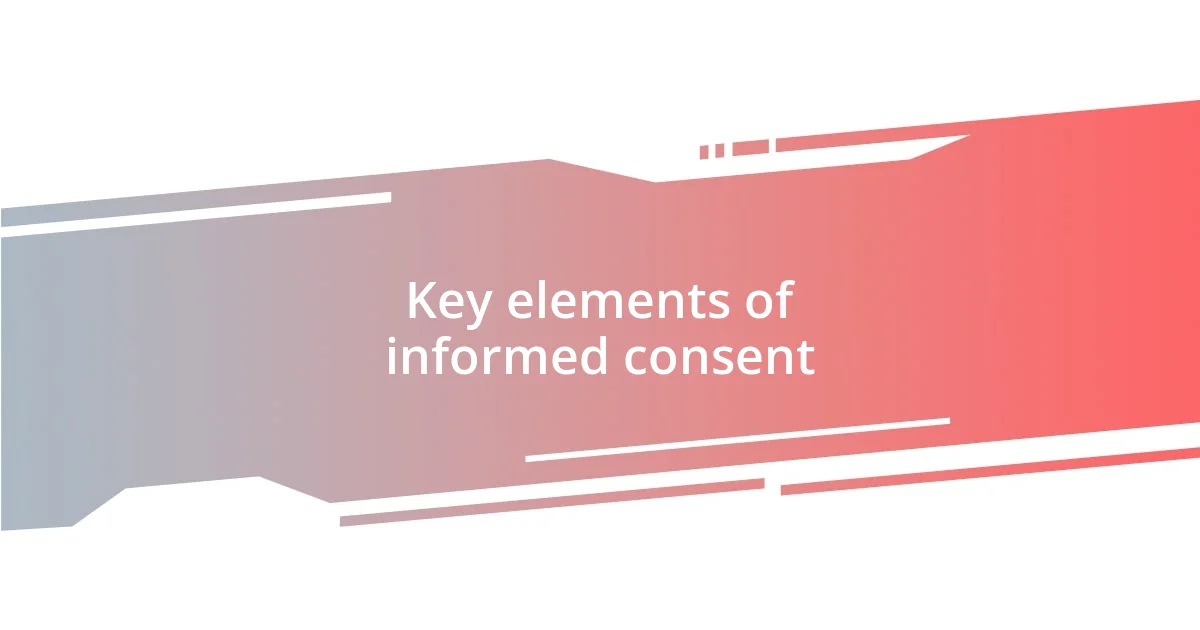
Key elements of informed consent
Informed consent in genetics hinges on several key elements that underpin the process. First and foremost, it requires a thorough explanation of the procedure, including its purpose, potential risks, and benefits. I recall a moment when I walked a family through a genetic test for hereditary cancer. The relief they expressed once they understood not only what the procedure entailed but also its implications was profound. It reinforced my belief that clarity is paramount.
Another essential element is the patient’s understanding of the information provided. I often ask patients to paraphrase what I’ve just explained. This simple act confirms their understanding and opens the door for further questions. I remember a young woman who hesitated but eventually admitted she didn’t grasp the concept of genetic variants fully. Through dialogue, we uncovered her misconceptions, allowing her to make informed choices.
Finally, ensuring that patients feel comfortable and supported throughout the consent process cannot be overstated. Creating a safe environment for discussion often leads to more honest communication. Recently, I had a patient who shared a deeply personal fear regarding a genetic diagnosis. By fostering that level of trust, I was able to help her navigate the complexities of her choices with empathy.
| Key Element | Description |
|---|---|
| Explanation of Procedure | Clear and detailed overview of the genetic test, including risks and benefits. |
| Patient Understanding | Ensure the patient comprehends the information by encouraging them to paraphrase and ask questions. |
| Emotional Support | Create a supportive environment that allows patients to express fears and concerns openly. |
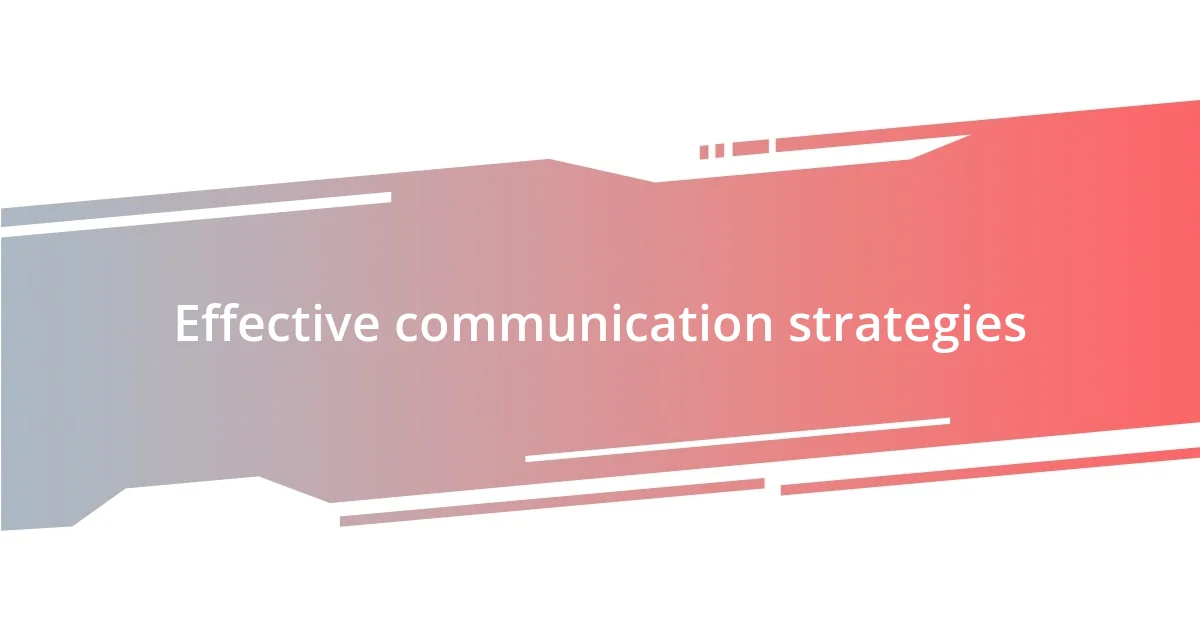
Effective communication strategies
Effective communication in the context of informed consent is crucial. I’ve learned that taking the time to listen actively can transform the patient-provider relationship. For instance, there was a situation where a patient shared her anxiety about the results impacting her family. By addressing her fears directly and discussing how genetic information can shape health decisions together, I could alleviate some of her distress and strengthen her understanding.
To foster effective communication during the consent process, consider these strategies:
- Use Clear Language: Avoid technical terminology; instead, opt for everyday language that makes the process accessible.
- Check for Understanding: Regularly pause to ask patients questions about what they’ve heard, reinforcing clarity.
- Encourage Questions: Create an environment where patients feel comfortable asking anything, no matter how trivial they think it might be.
- Utilize Visual Aids: Sometimes, a simple diagram can make a complex idea much clearer.
- Be Empathetic: Recognize and validate emotional responses.
When I implemented these strategies with my patients, I noticed a significant shift in their engagement levels. The transparency made them feel less like they were just signing a form and more like participants in their healthcare journey.
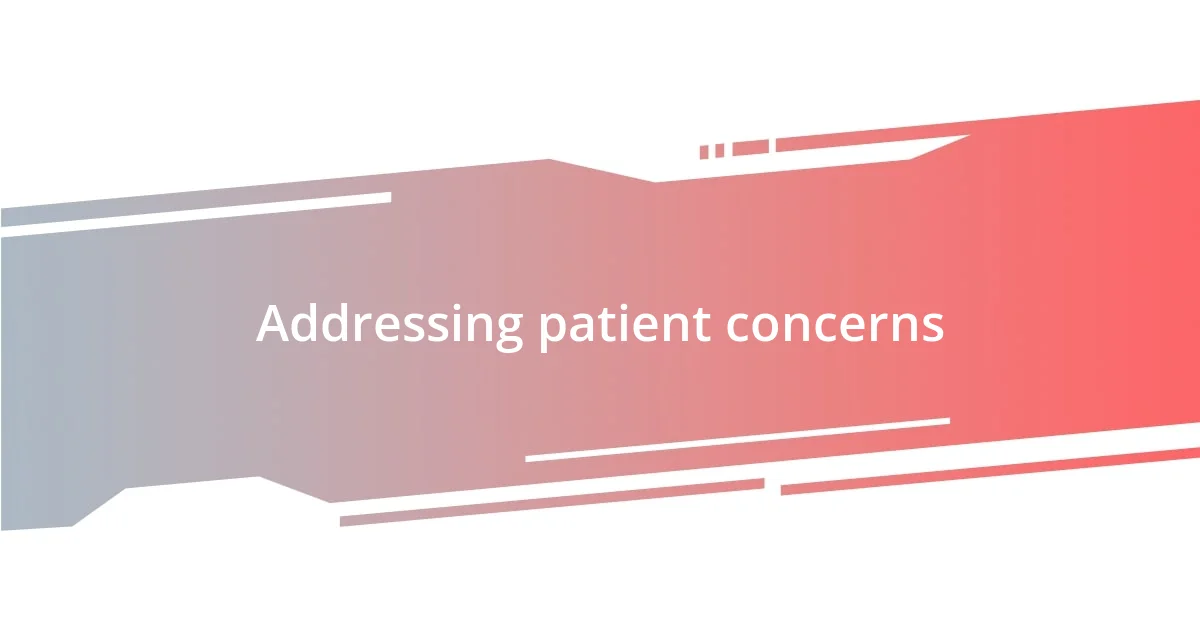
Addressing patient concerns
One of the most pressing concerns patients often express revolves around the fear of the unknown. I remember sitting with a gentleman who was hesitant about genetic testing for a hereditary condition. He worried that the results could unravel his entire family’s story. By addressing these fears directly, we could talk about what a positive or negative result could truly mean for him and his loved ones. It made me realize how vital it is to validate those feelings—after all, who wouldn’t be apprehensive when facing something that could change their life?
Patients frequently voice uncertainty about how genetic information might affect their relationships. I had a woman who was particularly anxious about how her results could impact her children’s future. Together, we explored the emotional ramifications, emphasizing that while knowledge can be daunting, it can also empower. This discussion not only eased her concerns but also helped her view the potential outcomes as tools for proactive health management rather than sources of fear. Isn’t it interesting how a conversation can shift perspective so dramatically?
Another critical aspect of addressing patient concerns is the assurance of confidentiality. I often remind my patients that their genetic information is deeply personal and protected. During one session, a young man expressed his anxiety about sharing such sensitive information with his employer. I took the opportunity to explain the legal protections in place, which seemed to alleviate his worries significantly. Being upfront about confidentiality allows patients to feel secure, enabling open dialogue and further enhancing their informed decision-making. How powerful is that trust in fostering a supportive atmosphere?
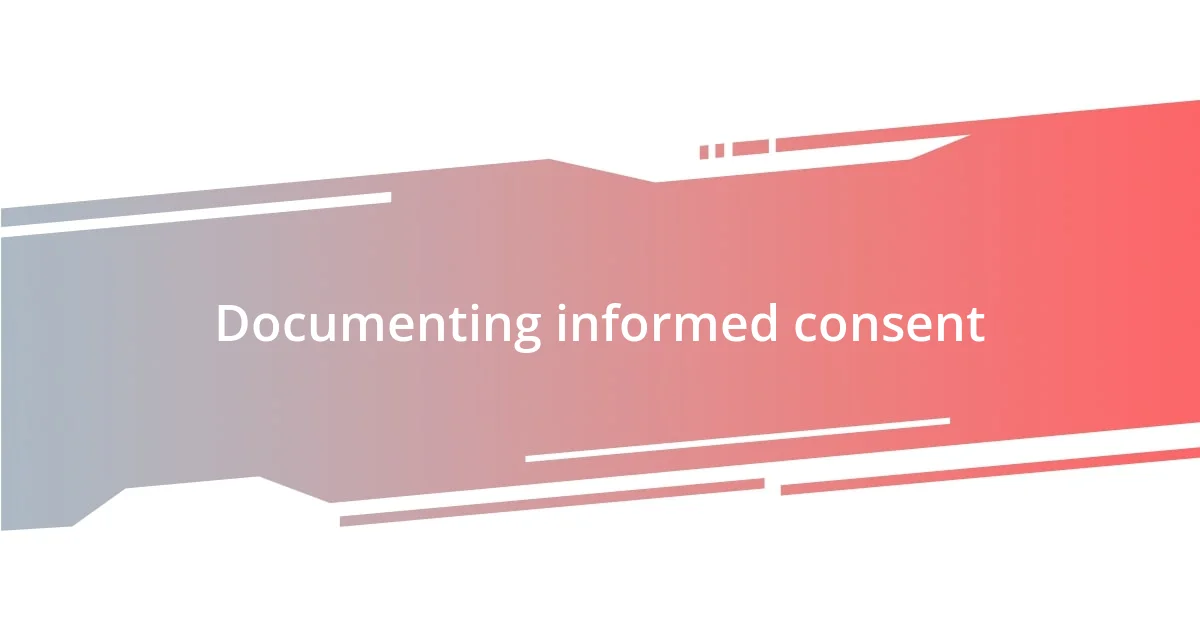
Documenting informed consent
Documenting informed consent must be thorough and clear, as it serves as a protective measure for both the patient and the provider. I once had a patient who, after our discussions, was excited about moving forward with testing, yet she felt hesitant when it came to putting her consent on paper. I assured her that documenting her understanding of what we discussed was not just a formality; it was a way for her to reflect on her choices. This shift in perspective made her more comfortable as she realized this documentation truly encapsulated her agency.
Moreover, it’s important that the documentation is not merely a checklist. I recall an instance where I provided a detailed summary of what our conversations entailed, including the potential risks and benefits of genetic testing. When the patient reviewed this summary, she felt a sense of control and clarity. It’s fascinating how a well-documented consent process can enhance a patient’s trust; I could see her anxiety melt away as she recognized that she was making an informed choice, not just signing a paper.
In my experience, I find that revisiting the documented consent can also spark important conversations down the road. For instance, during a follow-up visit, a patient mentioned a new developing concern regarding family implications based on her test results. When I pulled out the original consent document, it guided our dialogue seamlessly. Isn’t it great how what seemed like a form can actually reinforce ongoing communication and understanding? This continuity empowers patients to feel involved in their health journey every step of the way.
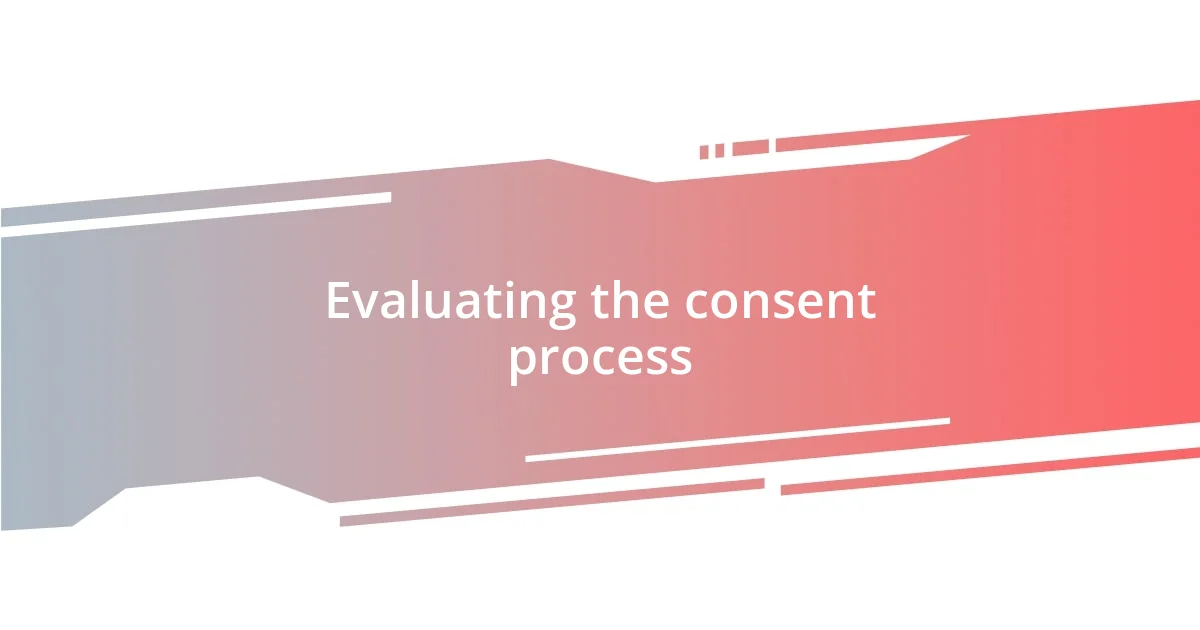
Evaluating the consent process
Evaluating the consent process is a crucial step in ensuring that patients are truly informed about their choices. I recall a particular case where I initiated the evaluation of our initial conversation about genetic testing. By inviting the patient to share their thoughts and feelings about what we discussed, I realized how beneficial it was for them to voice their understanding and concerns. This evaluation not only opened the door for further clarification but also fostered a deeper trust—something I always strive for in these discussions. How often do we just assume understanding without really checking in?
While assessing the consent process, I take special care to tailor my approach to individual needs. For example, I had a patient who benefited from visual aids. We used charts to break down complex genetic concepts. The moment I saw the lightbulb go off over their head was unforgettable. Isn’t it amazing how a simple graphic can transform confusion into clarity? This evaluative step reinforced that every patient learns differently, and personalizing the consent process goes a long way in making them feel confident and cared for.
Lastly, I think about how crucial feedback from the patient plays into evaluating consent. In one session, I gently asked a patient how they felt about the consent process itself after we wrapped it up. Their candid response about feeling overwhelmed surprised me, despite having taken time to explain everything. This feedback prompted me to rethink my methods and refine my communication strategies for future patients. Isn’t it fascinating how reflective practices can enhance not just your approach but your connection with those seeking guidance?
